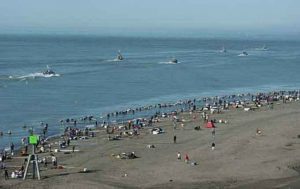
The Pacific Salmon Commission has announced the conclusion of negotiations between the United States and Canada on the Pacific Salmon Treaty, resulting in a new 10-year harvest agreement.
A diverse group of 59 Alaskans spent more than three years negotiating for the best deal possible for Alaska while ensuring conservation and sustainable access to our valuable shared North Pacific salmon fisheries. Under the agreement, every participating jurisdiction accepted a reduction in the number of fish that can be harvested, unlike recent treaties in which Alaska bore the majority of the burden. Alaska sustains a 7.5 percent reduction, compared to a 12.5 percent reduction for Canada, and reductions ranging from 5 percent to 15 percent for Oregon and Washington.
“I regret the reduction of even one salmon available to Alaskans for harvest. However, this treaty agreement protects the health and sustainability of our salmon stocks and guarantees Alaska’s ability to directly manage our fisheries without federal interference,” Governor Bill Walker said. “I met with fishing groups that opposed this treaty and carried their message back to D C in a meeting with the Secretary of Commerce to explore the option of a one-year delay. That did not prove feasible. I realize some fishery groups are unhappy with this outcome, but I commend Commissioner Swanton and his team of industry and fishery negotiators for their tireless effort to get the best deal possible for Alaska.”
“For the first time since the Treaty was originally negotiated in 1985, Alaska’s diverse treaty team unanimously approved the final deal,” Pacific Salmon Commissioner Charles Swanton said. “It speaks volumes that salmon subsistence users, seafood industry leaders, commercial fishermen, and recreational representatives all ended up endorsing this deal.”
As a result of these negotiations, when abundance increases, harvests will increase proportionally. New accountability provisions advocated by the Alaska treaty team enact limits on the number of fish available for harvest relative to how many salmon return that year: this “Calendar Year Exploitation Rates” approach improves upon previous standards and will lead to more accountability for all parties.
Source: ADF&G
